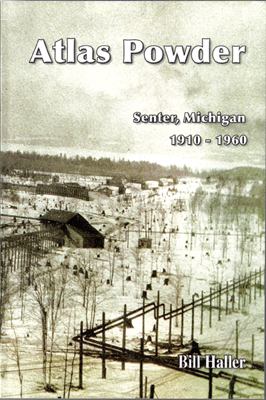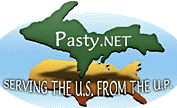By Charlie at Pasty Central (Chopper) on Sunday, January 13, 2008 - 07:11 am:
Author Bill Haller recently added new scenes to his Guest Gallery album of Atlas Powder photos, recalling life at Senter, Michigan near Dollar Bay. The hard working guys with the pickup stopped long enough for Ted Sved to preserve their smiles, sometime during the mid-twentieth century. Mr. Bill has compiled a rich collection of vintage photos and narrative about Senter and "The Village" built around the Atlas explosives plant. Seen through the eyes of an engineer, Bill takes us inside the operation for an up-close look. Since the book has been published, several folks have dug into their shoeboxes for even more memories. Among these new photos, Bill describes one interesting occupation:
The corrosion resistance of lead was know since Roman times when they applied it to their plumbing, that word derrived from the Latin "plumbum", meaning lead. Before the wide commercialization of synthetic rubber and stainless steel during the Second World War, lead was the material of choice for containing acidic substances. At Atlas, the floor of the new nitroglycerin house was covered with one-eighth inch lead, while the various tanks were lined with quarter-inch lead, all welded together with an oxy-acetylene torch.
Julius Casperson is shown above applying his craft, seaming a lead acid pipe at the Atlas powder plant in Senter in 1947. The 300 foot wooden nitroglycerin trough was also lined with lead sheeting prior to its later being "upgraded" with synthetic rubber lining.
Mr. Casperson
Merv Sastamoinen, who replaced Julius as a lead-burner at Atlas, still recalls that used lead was recycled by melting it in a pit with burning wood, and later recovering the solidified molten puddle from the bottom.
Thanks, Mr. Bill, and congratulations on the success of Atlas Powder: Senter, Michigan 1910-1960. We understand that sales during its first year have already covered the cost of creating it, meaning that all future proceeds will go to the Dollar Bay Foundation. Locally and on the web it is available at 








